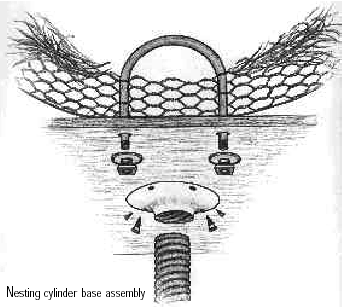
North America’s waterfowl population is making a remarkable recovery. After decades of decline due to drought and the loss of endless hectares of wetlands and grasslands under the farmer’s plow, ducks are reappearing in eye-popping numbers — most notably throughout the Prairie pothole region. The small ponds and marshes that still dot the area are brimming not only with water but also with mallards, wigeons, gadwalls, and teal, thanks to extraordinary rainfall and a burgeoning movement to reclaim waterfowl habitat. Setting the trend towards more sustainable land-use practices are programs like the North American Waterfowl Management Plan, a campaign to rehabilitate waterfowl habitat in Canada, the United States, and Mexico.
Now’s your chance to “get quacking” and help keep the comeback on track by creating habitat where waterfowl can feed, breed, nest, and rest. Providing nesting cylinders has proven to be enormously successful with mallards, pintails, and teal in open wetland areas, such as the Prairie pothole region. The materials needed for this project are sold in imperial measures, so the following instructions use feet and inches.
- Start with a 3’ x 7’ length of chicken wire or galvanized stucco wire.
- Roll the first 38” length of wire into a cylinder (approximately 1’ in diameter) and fasten in place.
- Continue to roll the remaining 47” length of wire, lining the 1 1/2” space between the inner and outer layers with a generous amount of straw (preferably flax).
- Attach the cylinder to a 1” x 8” x 3’ wooden board, using heavy wire or two 4” U-bolts.
- Choose a site in a marsh fringed by cat-tails and bulrushes, on the edge of open water 1 ‘ to 4‘ deep. The water should remain until at least mid-summer.
- Install the nesting cylinder by April 1, preferably in winter, when you can easily bore a hole through the ice to drive the support pole into place.
- Pound a 2” diameter galvanized support pole, approximately 6’ to 8’ long, at least 2’ into the marsh bottom. The nesting cylinder should be at least 3’ above the water’s surface, so the required length of the pole will depend on the depth of the water. The pole should be threaded for easy connection to the floor flange at the bottom of the structure. Protect the threading by temporarily screwing a coupling onto the pole before driving it into the marsh bottom.
- Attach the structure by screwing the floor flange onto the support pole, positioning the nesting cylinder crosswind to prevent drafts from entering.
- Place additional straw in the cylinder, fluffed to enable the hen to arrange it.
- Check the structure for damage each spring and supply new nesting material.

Screw a floor flange onto the bottom of the board. The final assembly (mounting the structure onto a support pole) takes place in the field.



